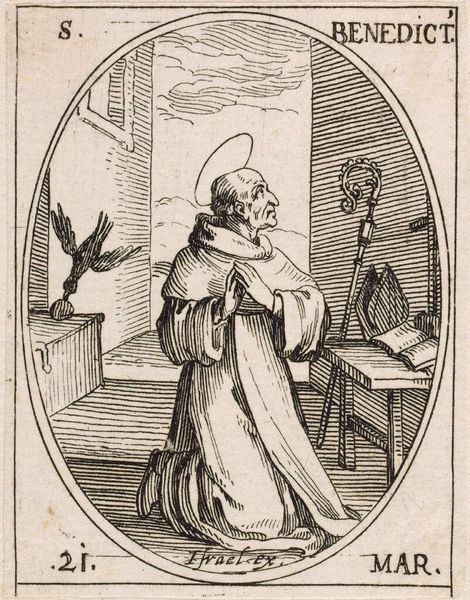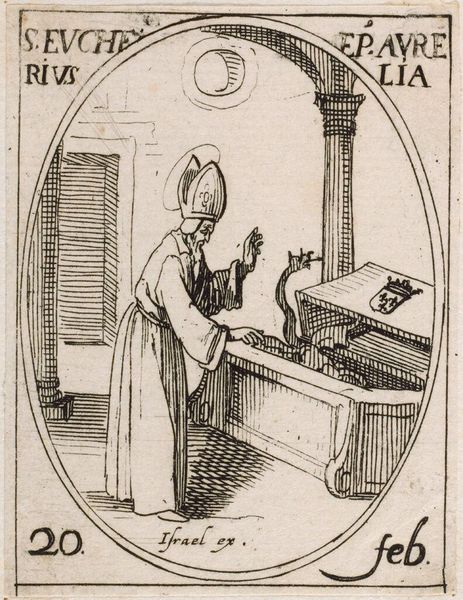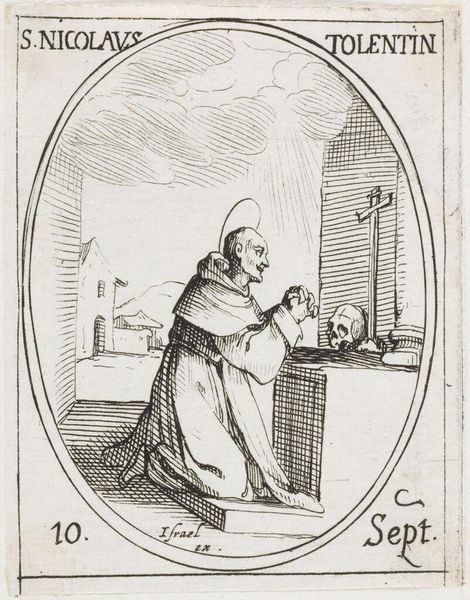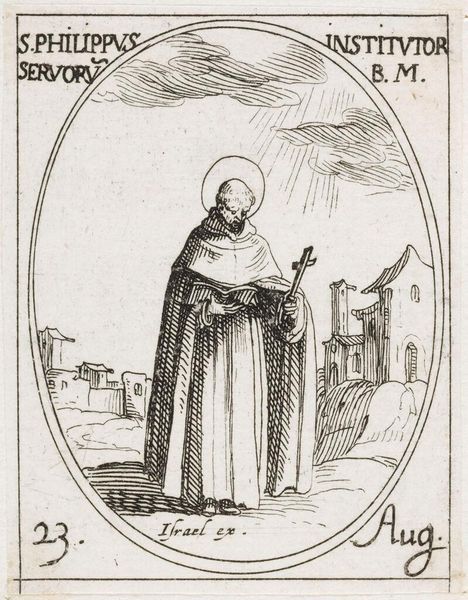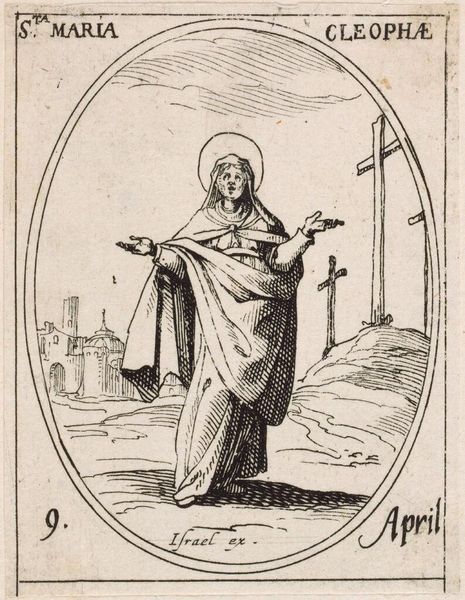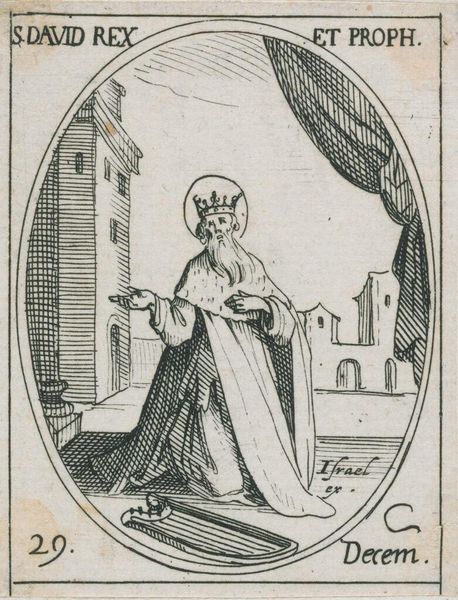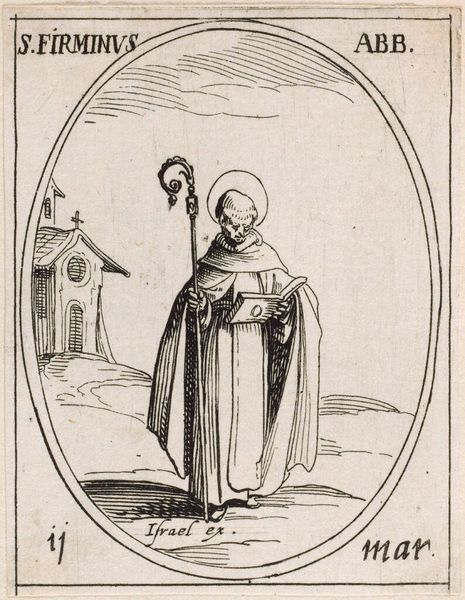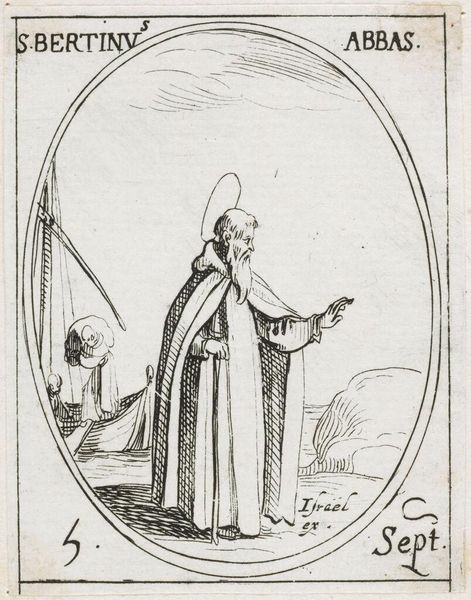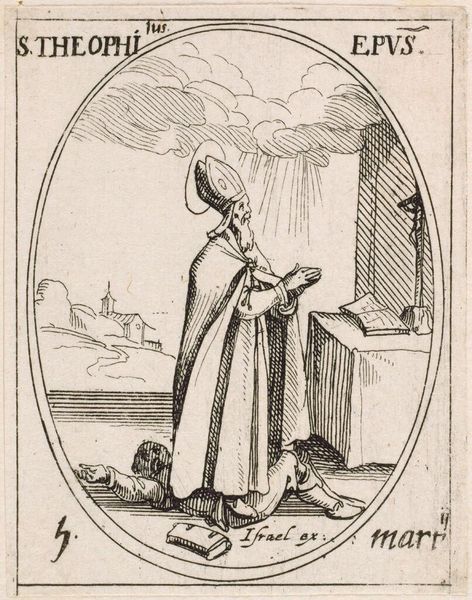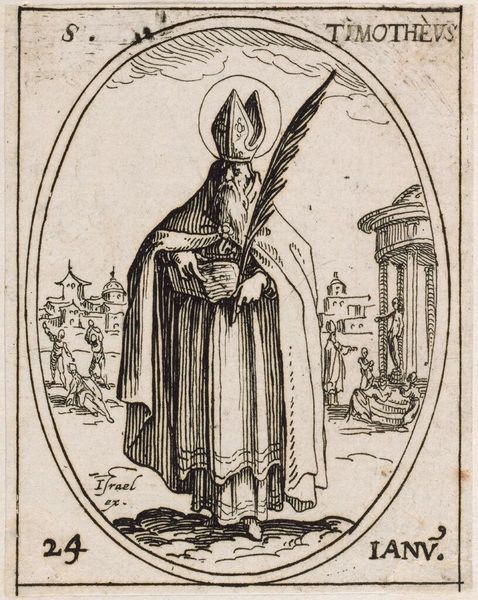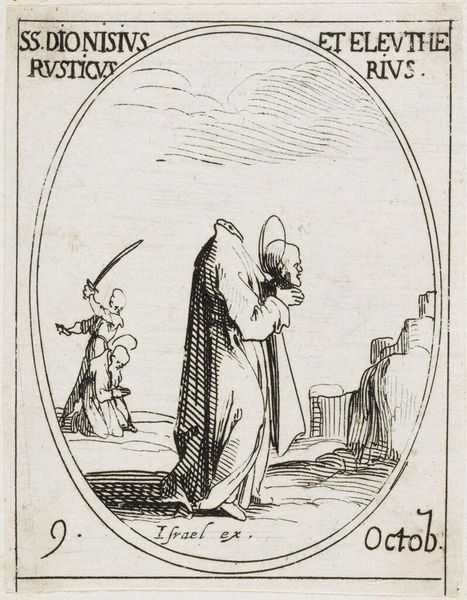
Dimensions: 7.6 x 4.9 cm (3 x 1 15/16 in.)
Copyright: CC0 1.0
Editor: Here we see Jacques Callot’s "Saint John Columbine," an etching from the early 17th century. It's so small, yet the detail is incredible. I’m struck by the figure's intense devotion. How do you interpret this work within its historical context? Curator: This piece reflects the Counter-Reformation’s emphasis on personal piety and the role of saints. Callot's choice of etching allowed for the widespread dissemination of such imagery, reinforcing religious doctrine and social values. It also highlights the Church's public effort to revitalize devotion in the face of Protestantism. What do you think the scale contributes to this effect? Editor: I guess the small size makes it more accessible, like a personal token of faith. I hadn’t considered how deliberate the choice of printing was. Curator: Exactly. By understanding the socio-political context, we see how art actively shaped cultural beliefs. It gives new meaning to the piece. Editor: I'll definitely consider the context more closely from now on. Thanks.
Comments
No comments
Be the first to comment and join the conversation on the ultimate creative platform.
